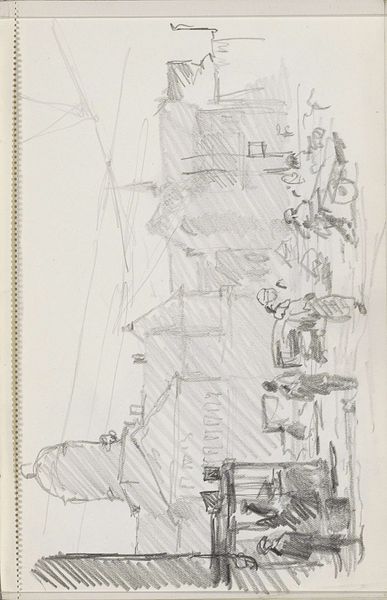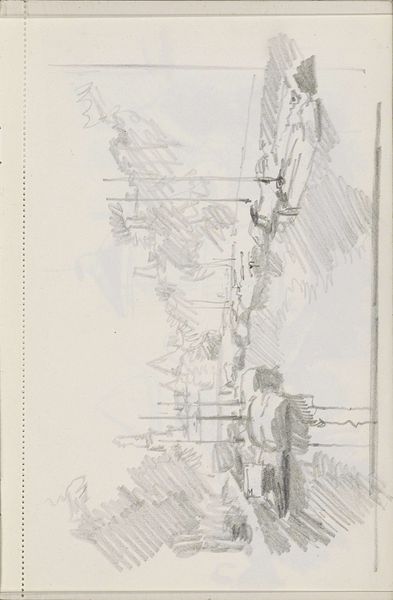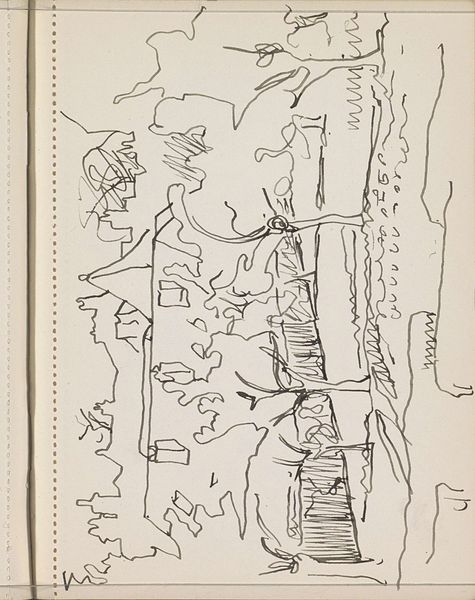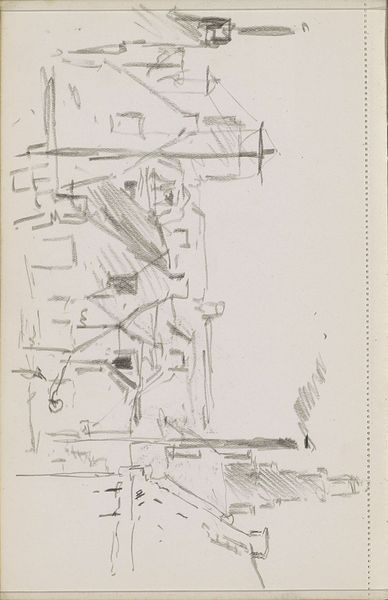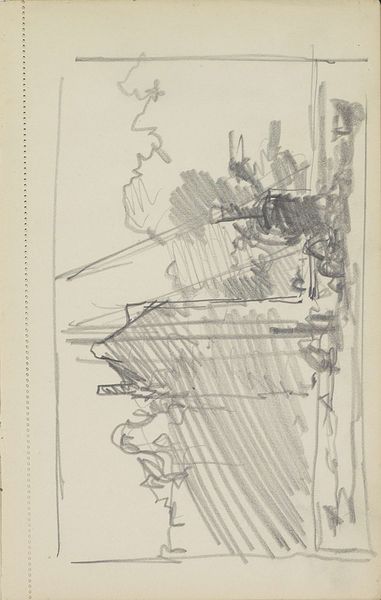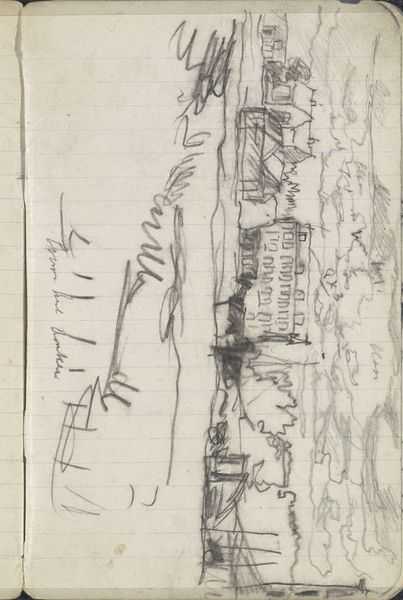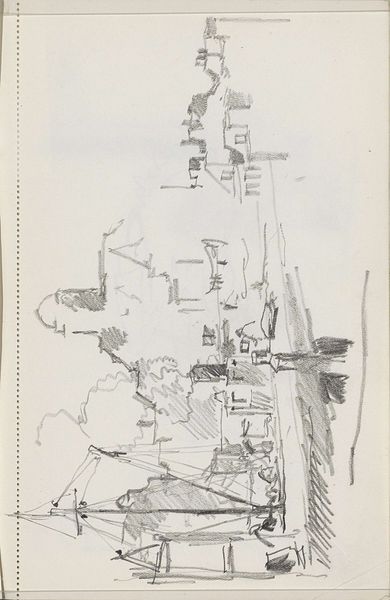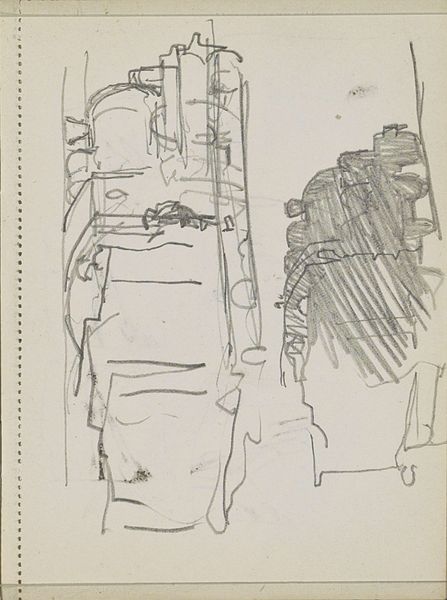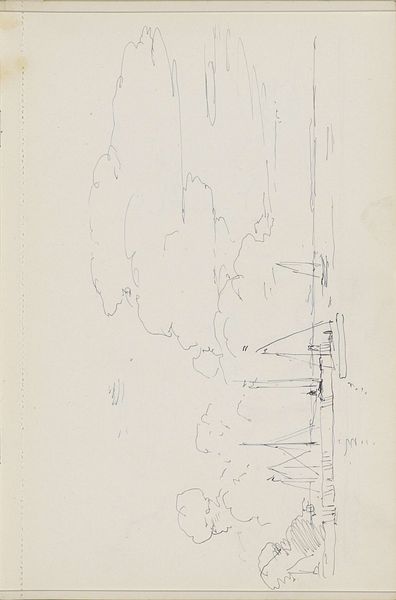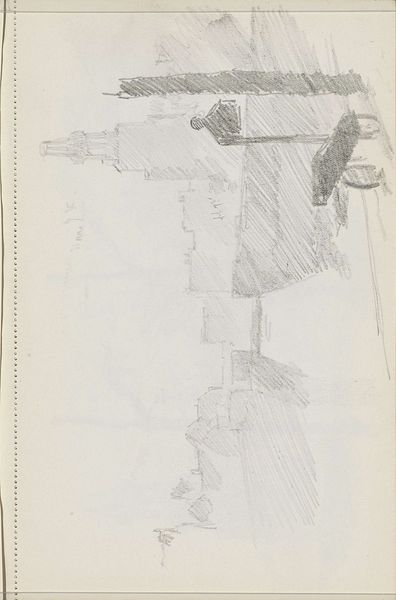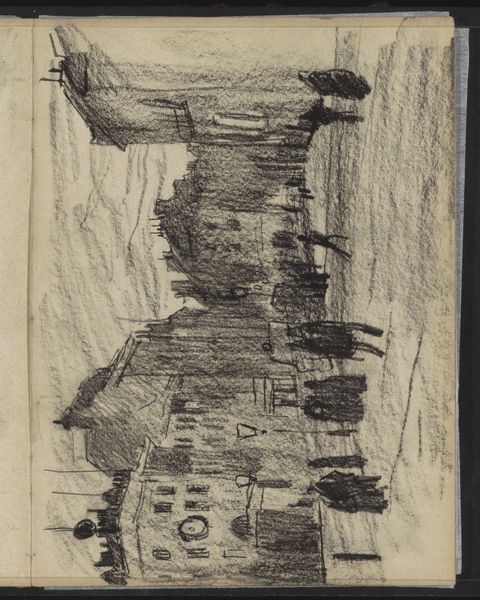
drawing, pencil, graphite
#
drawing
#
amateur sketch
#
hand drawn type
#
landscape
#
personal sketchbook
#
idea generation sketch
#
sketchwork
#
ink drawing experimentation
#
pen-ink sketch
#
pencil
#
graphite
#
sketchbook drawing
#
sketchbook art
#
modernism
#
initial sketch
Copyright: Rijks Museum: Open Domain
Curator: Let’s turn our attention to Cornelis Vreedenburgh's "Voorsteven van een schip op het water," circa 1935-1936. It's currently held at the Rijksmuseum and rendered in graphite and pencil on paper. What's your initial impression? Editor: Restless energy. A ship half-formed, charging out of the page! I sense a flurry of marks, almost a battle between the artist's hand and the stubborn potential of the blank page. Curator: Absolutely. Vreedenburgh, during this period, appears fascinated by capturing the industrial landscape. We see in his sketchbooks a preoccupation with maritime structures and harbor activity. The materiality—graphite and pencil—lends itself well to preliminary sketches intended to fix impressions. Editor: I feel the cold sea spray just looking at those choppy lines! It's a raw immediacy. Did he plan grand seascapes with this, do you think, or did he let his pen run away with the moment’s impulse? Curator: These sketches weren't necessarily preludes to finished paintings. They functioned as exercises, explorations, idea generation. Consider how paper production had become increasingly democratized during this time, contributing to an upsurge in sketchbooks amongst both amateur and professional artists. These more intimate glimpses give us valuable insights into the means of artistic production. Editor: You’re right, that rawness does whisper "working notes." The image’s rough character reminds me that art can reside in fleeting capture just as profoundly as in finished declaration. In a sense, his work ethic is exposed for the audience to see in his raw process. Curator: Precisely. I mean, if you study other sheets from this period, you will encounter sketches related to harbor workers, tools, the mundane objects one finds around shipyards. Vreedenburgh doesn't sentimentalize the working world; instead, he records it. Editor: More than documentation, though—these rapid strokes carry feeling. It transcends mere reportage. There’s exhilaration. In seeing a ship’s bow, do we witness his inner drive too? A spirit pressing forward? A wish toward progress, even? It gets the creative soul wondering if these vessels represent a physical interpretation of one's ambition. Curator: And that brings us to where these artworks can transcend their origins. Editor: Agreed, giving new resonance to an ordinary image from a sketchpad. It feels less about technical drawing and more about the heart and spirit one transfers to a paper or canvas through vision.
Comments
No comments
Be the first to comment and join the conversation on the ultimate creative platform.
